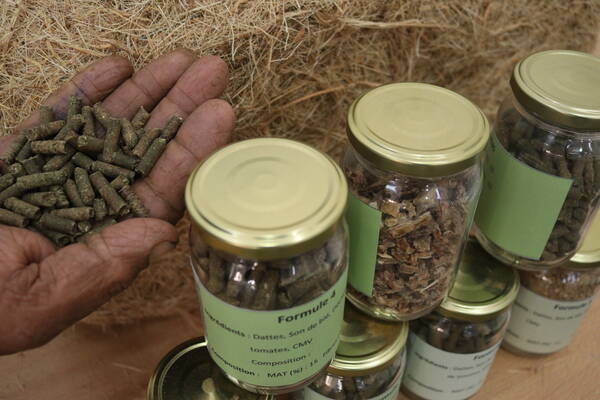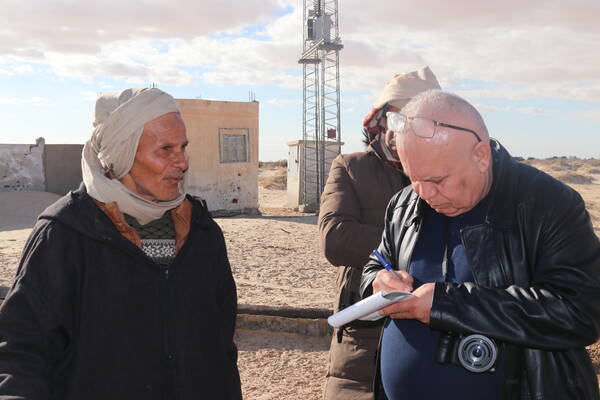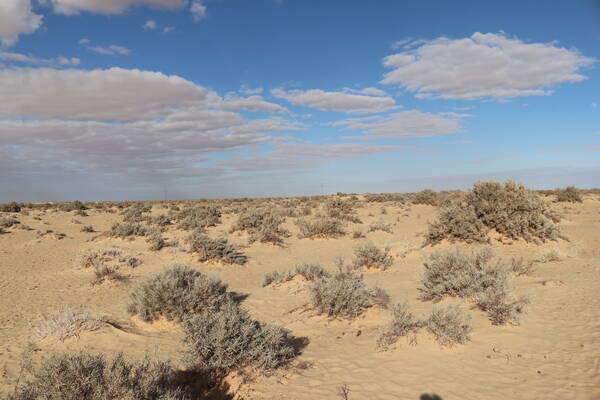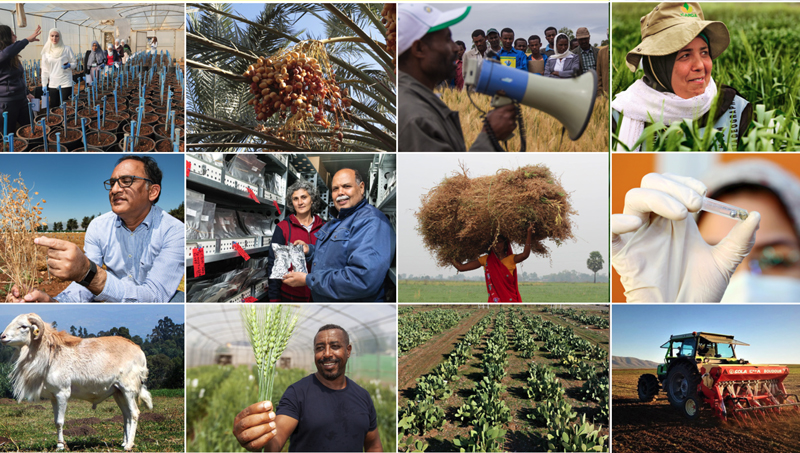Exploring Pastoral Living Landscape in Tunisia's Arid Drylands

In collaboration with national and local partners, ICARDA recently led a participatory workshop to explore the pastoral living landscape in Tunisia's Arid Drylands. This work was conducted as part of the CGIAR Research Initiative on Livestock and Climate, which is supported by contributors to the CGIAR Trust Fund.
Held on January 24, 2024, in Beni Khedache-Medenine, Southern Tunisia, this workshop convened stakeholders from diverse backgrounds, including research, development, policymaking, and local governance entities, agro-pastoral associations, and representatives of agro-pastoralist and nomadic communities, all committed to advancing innovation in animal feeding and rangeland management.
Recognizing that relying solely on technical interventions to restore degraded rangelands is not enough, ICARDA advocates a "territorial approach" to innovation, which integrates territorial intelligence and economic diversification in the pastoral areas. This approach fosters social and economic interactions to effectively tackle the challenges of rangeland pressure and governance within the broader context of territorial development perspectives.
The PLL approach involves pioneering interventions targeted at both the direct and indirect drivers of pressure on rangeland which lead to its degradation and marginalization. Through PLL, ICARDA and its partners in Tunisia are co-designing integrated pastoral development and rangeland innovations that alleviate grazing pressure, enhance rangeland governance, and promote sustainable pastoral development.

Research, development, and capacity development activities that are combined and implemented in the PLL include various circular and complementary components, such as:
- Optimizing animal feeding production and practices using oases and protected agriculture biomass and by-products
- Leveraging locally produced forage legumes that have high-protein content
- Advocating for the adoption of small-scale mechanization that enhances animal diets by processing more digestible feed alternatives
- Promoting on-farm feed production and service provision at scale
Combined with integrated rangeland restoration techniques, this package of innovations fosters a holistic approach to sustainable practices. By alleviating grazing pressure, PLL encourages pastoral communities to embrace more sustainable rangeland restoration methods like periodic resting and organized subsidy-free grazing, thereby allowing rangelands the crucial time to regenerate between grazing periods.

Implementing this integrated approach involves close interaction and geographic continuity across the three PLL community pillars: the Farmers’ Organization of Dhaher at Beni Khedache, Medenine, SMSA AL Maraai (Douz, Kebili), and the Community of Regime Maatoug, Kebili. These community-based organizations utilize collective rangelands for grazing and livestock keeping, along with engaging in agricultural activities such as water harvest cultivations in oases. They seek to enhance their animal feeding practices through the adoption of technologies and innovations proposed by ICARDA and NARES, highlighting a commitment to leveraging local resources for sustainable development.
PLL also requires engagement beyond community boundaries that involves diverse research and development backgrounds such as funding agencies, public training and extension entities, and other private sector actors that foster mutual learning and exchange by co-innovating and sharing knowledge, in addition to facilitating and supporting the overall innovation and capacity building process.
The interventions established by ICARDA and its community partners have so far led to the establishment of a highly functional PLL driven by farmer demand, delivering affordable and locally adapted solutions. For example, animal feed machinery was distributed within one community and used to process more than 15 tons of gross animal feed, using oases waste, crop residues, and other byproducts.

A PLL workshop at Beni Khedache Agro-Pastoralists Association aimed to strengthen the PLL approach by aligning stakeholders on key concepts like "co-innovation" and "networking." Stakeholders agreed on promoting demand-driven research to address priority issues, integrating efforts for more profitable and sustainable livestock management while easing pressure on rangelands.
Pastoralists provided insights on technical challenges such as optimizing alfalfa drying, incorporating tomato leaf residues into feed formulas, processing date palm residues, and selecting shrub species for rangeland restoration, which can be used to restore around 3000 ha of neighboring rangelands.
Scientists from the Institut des Régions Arides (IRA) de Medenine also presented new feeding formulas utilizing locally produced by-products. Additionally, ICARDA scientists demonstrated a pilot site engaged in rangeland restoration that combines water harvesting structures with reseeding indigenous species that are tailored to the harsh local conditions of extreme temperatures and frequent droughts and, therefore, are hardier as climate change impacts deepen.

- Raised awareness and understanding of the PLL concept among all participants.
- Stakeholder engagement for collaboratiove aspects of PLL such as planning, addressing technical demands, technology adoption, etc.
- Analysis of 2-year PLL achievements and research findings, with participant application.
- Discussion on future PLL development expectations.
Contributors:
- Aymen Frija, Senior Scientist, Agricultural Economist (Economic Modeling), ICARDA
- Azaiez Ouled Belgacem, Senior Scientist, Rangeland Ecology and Management, ICARDA
- Zied Idoudi, Research Associate, Economics & Participatory Methods, ICARDA
This work was conducted as part of the CGIAR Research Initiative on Livestock and Climate, which is supported by contributors to the CGIAR Trust Fund.



